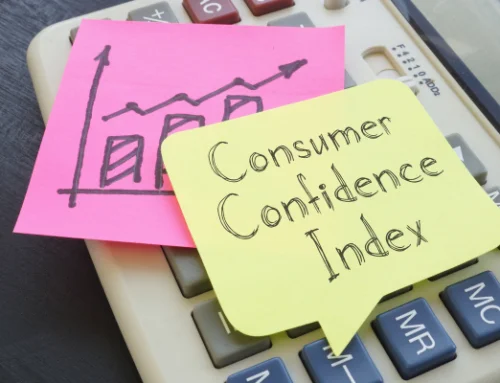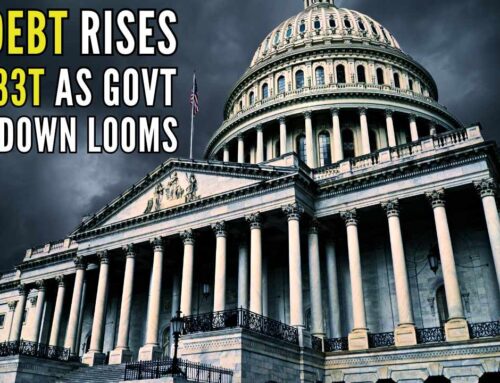We have had a 10-year bull stock market since the big crash of 2008; that’s 10 years of essentially uninterrupted stock market advances. Here are 10 things investors should know:
1. What’s happening with stocks and investment-grade corporate bonds?
The last time there was a divergence between stocks and investment-grade corporate bonds, like we’re seeing now, was in 2007. Lately, investment-grade corporate bonds have dropped, but the stock market (as judged by the S&P’s performance) is still hanging in there. Normally, they go up and down together. This is a pretty good indicator that one of two things has to happen: either corporate bonds will go up in price and match the S&P, or the S&P will roll over and track the downward trend of stocks. Additionally, the financial stocks sector has declined in recent months, signaling a yellow light or warning of a down-trend.
This doesn’t mean equity markets can’t continue higher, but the situation should be closely watched.
2. The Shiller Price-to-Earnings Ratio
The Shiller price-to-earnings (P/E) is a valuation measure usually applied to the S&P 500 equity market. It is defined as price divided by the average of 10 years of earnings (moving average), adjusted for inflation. Stocks reached a Shiller P/E all-time high ratio of 44 in 1999 due to the tech bubble, which burst in 2000. Other than 1999, the only time the P/E has been higher than 30 was in 1929 prior to the Great Depression.
It’s at 32 now.
3. The S&P ETF “SPY”
There’s been a major trend toward buying ETF (exchange-traded fund) indexes lately. There are lots of reasons it makes sense for investors in accumulation mode. For instance, if you track the whole S&P 500 index by buying the popular SPDR S&P 500 ETF (the symbol is “SPY”), you could
- beat 85% of money managers or mutual funds every year,
- own 500 of the best companies in the world, and be diversified, and
- not pay a manager, so your cost ratio is around 0.4%.
However, historically, the stock market crashes every 7 or 8 years (like it did in 2008, 2001, 1987 (Black Monday), and pretty much every 7 to 8 time period prior). We are overdue for another crash, which may be okay for the young who can afford to wait for the market to come back up, but it’s a recipe for disaster for retirees.
Right now, 10,000 people per day in America are turning 65, and this will continue until 2030. The stock market is not a safe place for these people.
4. Major Market Headwinds
The market is facing numerous headwinds that did not exist in 2011 or 2015:
- For instance, many countries are deeply in debt, like Italy, Greece, Spain, and the US.
- Deutsche Bank, Germany’s largest bank, is another major issue of concern. The value of its stock has gone down by 65% in the last 10 months.
- The Federal Reserve is raising interest rates and reducing its balance sheet. Lowering interest rates tends to stimulate economies, while raising interest rates too quickly has typically caused recessions. As the Fed raises interest rates (we owe $21 trillion dollars and growing, mainly in Treasury bond interest), that crowds out a lot of discretionary government spending. The Federal Reserve’s balance sheet has shrunk by more than $110 billion so far this year—part of its calculated tapering program. More than half of this reduction has occurred in the last few months.
- Short-term interest rates are rising rapidly, not just in the United States, but around the world. Emerging markets interest rates are skyrocketing year-to-date. If you look at the yield curve, the difference between short and long-term interest rates, it’s usually a nice, normal curve showing increasing interest rates flattening out after 20 to 30 years. An inverted yield curve, which we have now, is where the difference between two-year and a ten-year Treasury notes is very small. This usually indicates dropping economic activity.
- The latest GDP report for the US is estimated to be around 4%, but we need to temper our enthusiasm with the knowledge that corporations had a one-time stimulus with the tax breaks they just received. Corporate profits were flat in the first quarter and would have been down without the benefit of tax cuts. Expectations are that next year’s earnings will be flat. Meanwhile, global economic growth, especially in Europe, is slowing down. With the US dollar going up and talks of even more tariffs, the emerging markets and the G7 are stalling. Brazil and Turkey are down over 30%, and China is officially in a bear market—down 20% year-to-date from its high.
- Quantitative easing—likened to “printing money”—has been happening since 2008 in an international effort to lift the world out of the global recession. The global central banks have flooded the world with more than $10 trillion, virtually all of it coming from just three central banks: The Federal Reserve of the United States, the ECB (European Central Bank), and the Bank of Japan. Now, the ECB has started tapering its quantitative easing program—phasing out the amount of debt it had been buying. The Fed has already reduced its balance sheet by $150 billion since just last year.
5. Recession Prediction
Based on their Recession Dashboard, Guggenheim Investments’ recession probability model says that the next recession will begin in late 2019 to mid 2020. They say that risk assets tend to perform well two years out from a recession, but investors should become increasingly defensive in the final year of an expansion, since they typically decline in the last year before recession.That means this fall and winter, you should move your assets to safety.
There are typically seven signs of a late-market cycle before a crash:
- Markets average a 27% decline.
- Treasury bonds average a 20% increase.
- The labor market becomes unsustainably tight.
- The Fed raises rates into restrictive territory.
- The yield curve flattens.
- Leading economic indicators start to decline.
- Consumer spending declines.
- High-yield bond spread widen.
6. The Difference Between “Suitability” and “Best Interest”
With all of the market uncertainty, it’s imperative you find a qualified financial advisor. You should learn the difference between suitability and best interest when it comes to the investment recommendations you receive.
“Suitability” relates to brokers or people who make commissions on securities trades (stocks and bonds). Suitability, or an investment’s appropriateness for an individual, is ultimately judged by the self-regulatory, not-for-profit organization FINRA (Financial Industry Regulatory Authority), which regulates brokers. From FINRA’s standpoint, age, existing investments, financial situation and goals, annual income, liquid net worth, effective tax rates, marginal tax rates, investment objectives, investment experience, and time horizon to retirement should all factor into an investment’s “suitability” for you.
Unfortunately, FINRA standards are vague, and there’s nothing illegal about steering you toward investments which may pay hidden commissions or higher commissions than other “suitable” investments. Brokers are often captive to their wirehouses and can only sell investments that their organization provides. So, comparisons in terms of investment “suitability” often include a very short list.
“Best interest,” on the other hand, relates to investment advisors who are fee-based fiduciaries. Investment advisors are regulated by the US Securities and Exchange Commission (SEC), a federal commission created by Congress in 1934 following the Great Depression. Best interest standards require an advisor to recommend only what’s in an investor’s best interest, net of fees, compared against a large universe of investments and with only the investor’s personal circumstances foremost in mind.
Most investment advisors create complete plans, which include tax mitigation as a large factor in their recommendations.
7. Your “Risk Number”
At brokers’ offices, you are required to fill out a questionnaire—usually not very long and usually a very vague series of questions—that will assign you a risk number to assess your “risk tolerance.” Beware, because this risk number assignment comes with the understanding that you have chosen your investments based on that number. The risk number is not really about gauging investment suitability, it’s more about avoiding getting sued by you.
Keep in mind, brokers only sell what their company sells. They make commissions (the highest possible), and they only make commissions when you have money invested in the stock market. They don’t get involved with how you will withdraw money after you retire or how to lower your income taxes.
8. Pie Charts as a Planning Method
Remember that risk number assigned to you? Based on that number, brokers create pie charts of investments (the ones they sell), breaking them up between stocks and bonds, moving a higher percentage of your money into bonds for “safety” as you get older.
The trouble is, in a very low-interest rate environment with interest rates rising, bonds are not safe. In fact, they’re disastrous. Unlike brokers, investment advisors—who are fiduciaries required to follow the best interest standard—will take a look at other opportunities besides stocks and bonds, including principal-protected investments and products that offer tax advantages.
9. The Three Requirements of a True Fiduciary
Many financial specialists claim to be fiduciaries required to look out for your best financial interests, but they aren’t. Here are the three fiduciary requirements (all three must be present):
- They only have a Series 65 license. They cannot accept sales commissions on equities or trades. They are fee based.
- They are an independent firm and offer a large universe of financial instruments. There is no one telling them what they can or cannot sell.
- They are structured as an RIA (Registered Investment Advisory) firm.
10. The Dual-Licensed Broker
One reason brokers can claim to be fiduciaries (but not be) is that they are legally allowed to hold dual licenses. People that have licenses other than, or in addition to, their Series 65—like Series 66, Series 7 and/or Series 6—are allowed to make commissions on securities based on “suitability” on the one hand, but then they can turn around and give you advice supposedly in your “best interest.” The only requirement for the dual-licensee is that they disclose at the very beginning that they may be acting one way sometimes and another way other times; they’re allowed to wear two hats.
Protect yourself, and avoid this scenario altogether. It’s confusing and can be duplicitous.
We’re living in very interesting times. Make sure you have the knowledge you need to keep your investments safe.


